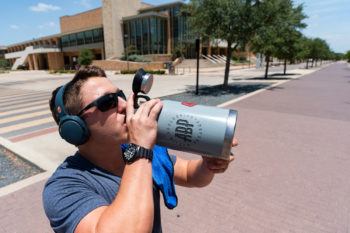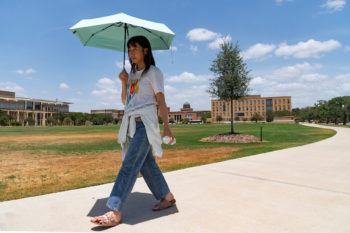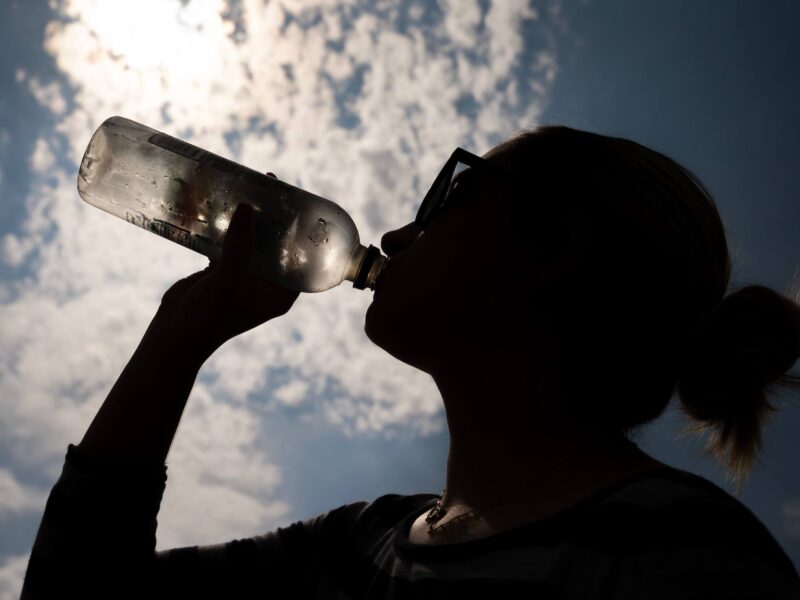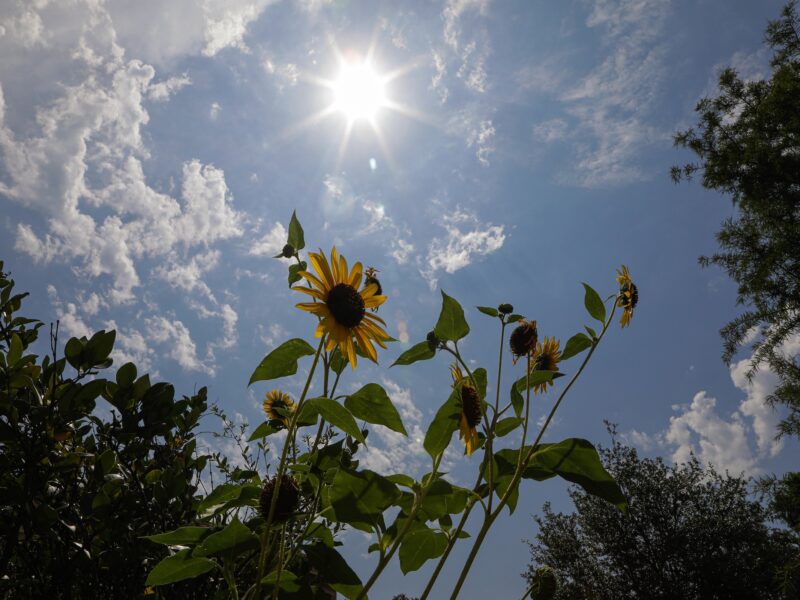In Extreme Heat, Extra Precautions Urged

With millions of Americans sweating through triple-digit temperatures this month, two Texas A&M family medicine doctors say it’s important for people to stay cool and hydrated during the ongoing heat wave.
Dr. Jason R. McKnight, clinical associate professor with the Department of Primary Care and Population Health in the Texas A&M University College of Medicine, said it’s not unusual for the clinic where he practices to see an increase in people experiencing heat related illnesses. Most of the time, these patients work outdoors during the day. But with the record-high temperatures Texas is currently experiencing, it’s important for everyone to be cautious of the extreme heat.
“What is happening in the current temperatures we are experiencing, if patients are outside in the heat too long and they’re not staying adequately hydrated or they get too hot, they’re likely to experience symptoms and they can be deadly if not treated appropriately,” McKnight said.
In Dallas County, for example, health officials on Thursday reported the first heat-related death of the season. They called the death of the 66-year-old woman with underlying health conditions a reminder of the importance of taking every possible precaution.
According to the Centers for Disease Control and Prevention, heat-related illness, like heat exhaustion or heat stroke, happen when the body is not able to properly cool itself. High humidity, McKnight adds, also affect the body’s ability to cool itself down by making it harder for sweat to dissipate the heat.

Untreated heat-related illness can quickly progress, he said. Symptoms of heat exhaustion like heavy sweating, feeling faint, nausea and dizziness can quickly progress to heat stroke, when the body’s internal temperature reaches 103 degrees or higher.
With temperatures as hot as they’ve been, people should minimize their time spent outside during the middle of the day, McKnight said, between 2 and 6 p.m.
“If you have to be outside during those times, you want to try and be in the shade as much as possible,” McKnight said. “You want to wear loose breathable clothing, drink plenty of water and electrolyte-containing solutions to stay hydrated, and you want to take frequent breaks.”
Dr. Brandon Williamson, clinical assistant professor and primary care physician at Texas A&M Health Family Care, adds that it’s also helpful to wear protective clothing that is cool and wicks moisture if one is spending an extended amount of time outside.

It’s also a good idea to ease into the heat, he said.
“If you’re going to start being outside, and you don’t have any choice, make sure you start out slowly,” Williamson said. “Don’t go from being on your couch all day to being outside for eight to 10 hours a day.”
Symptoms to pay attention to while outdoors in the heat include nausea, headaches, lightheadedness, weakness, confusion, fast and strong pulse, among others. Signs of heat stroke that warrant a call to 911 include confusion, sleepiness, non-responsiveness and severe muscle cramps.
“If someone isn’t acting normally, that’s a sign they need to be cooled down immediately and if they don’t improve quickly after being taken out of the heat and given something cold to drink, taking a cold shower, and things like that, they need to be taken to the emergency room for them to be cooled down emergently,” Williamson said.
For those who work outside, McKnight advises taking frequent breaks. People should immediately move to a cool place if they start to feel lightheaded or weak.
“Do whatever you can to cool down,” he said. “You can use ice packs, a cool washcloth, rinse off in a cool shower, get in the shade, and drink plenty of fluids, because when you start experiencing those symptoms, you’re moving into heat exhaustion.”
Ignoring those symptoms puts individuals at risk of heat stroke, he said. Heat stroke happens when a person stops sweating, becomes extremely dehydrated and the body loses the ability to regulate its temperature, McKnight said.
Older adults, the very young and people with mental illnesses and chronic diseases are at the highest risk of heat-related illness, according to the CDC.
“Listen to your body. If you’re struggling, you’re really nauseous, you feel a little lightheaded or you’re unable to catch your breath or your heart rate doesn’t come down when you’re resting, those are all reasons to take a break or get into some shade or potentially take a cold shower,” Williamson said. “The tough thing is that if you get sick enough, you won’t be the one to recognize you’re sick. It’ll be the people around you, so keep an eye on each other.”
Media contact: tamunews@tamu.edu





